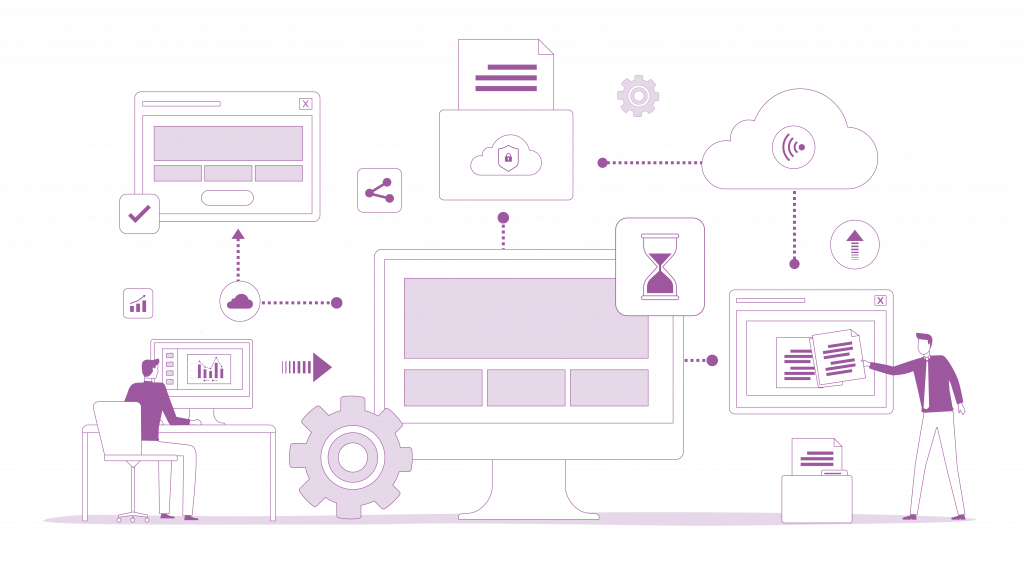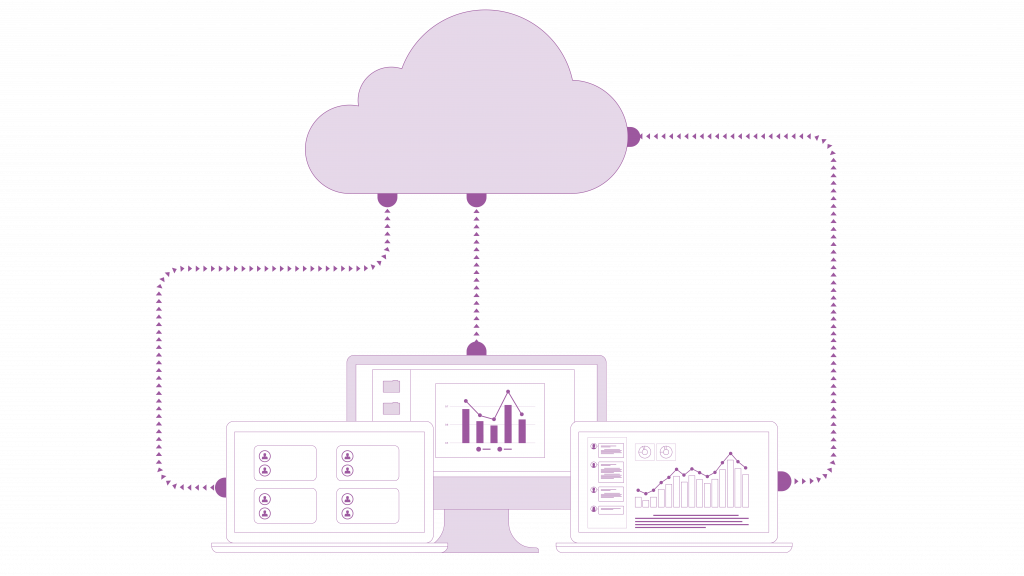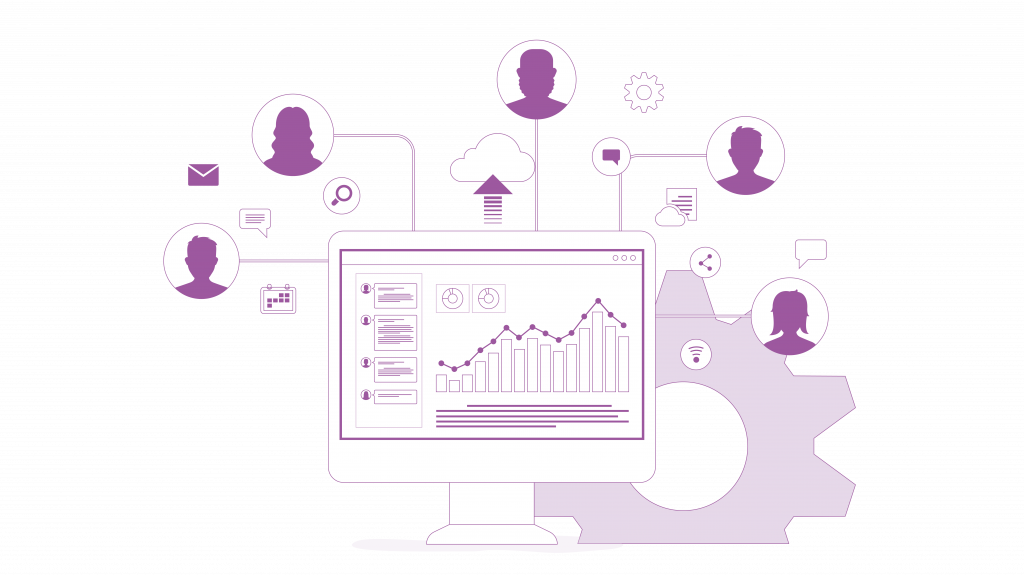What you have missed so far in interdepartmental collaboration
What you have missed so far in interdepartmental collaboration
Those who work in controlling often turn to Excel. This makes sense, as it is a fairly functional and intuitive tool. However, when it comes to collaborating more efficiently and achieving ever leaner planning processes, the first doubts about this application arise. We have taken a closer look at planning with Excel and present our Pro variant of Excel, which saves you both time and a lot of nerves in the planning process.
Collaborative planning as the basis for lean and efficient planning processes
To be able to control planning effectively, we need reliable real-time data. On the one hand, AI solutions help us to calculate complex planning scenarios and run automated simulations. On the other hand, shorter and faster planning cycles give us a solid database. However, fast and lean planning processes are only possible if data is collected more quickly and reliably and merged transparently and without errors. This requires smooth collaboration with the help of efficient tools, especially in the case of cross-departmental planning. Which brings us back to Excel, the most widely used (Source: Study ICV/QVANTUM)) planning tool in German companies: Is Excel a suitable tool for preparing planning data? Are we able to accelerate our planning process with Excel and collaborate transparently? We put Excel to the test:
What we like about Excel
Microsoft Excel is a very popular planning tool in controlling for a reason. We show the advantages at a glance:
Ready to go: the program is simply installed and you can get started right away.
Flexible: You can flexibly adapt and expand tables to new conditions.
Independent: You work independently with Excel. Numerous videos, templates and tips from the net community help with problems.
Stable: New Excel versions usually adopt your data without any problems - no annoying updates!
This is what everyday planning with Excel looks like:
- In costly, manual work, planning tables are created from the master sheet for departments and users and sent back and forth → this is time-consuming and, in the worst case, data is lost during email ping-pong
- Planners create copies of read-only Excel files to work in → planning figures are scattered across multiple instances
- Each department plans internally with their own Excel templates → cross-departmental sharing does not occur
- As the person responsible for planning, I have to ask for the planning status of my colleagues myself → This is annoying, cumbersome and costs energy
- Excel formulas are entered manually → numbers can quickly be changed or deleted by mistake and lead to incorrect data
- I have to manually merge my planning data in Excel, checking formulas and correcting possible errors → a lot of time is lost in entering the data

We spend more time on preparations and organization than on actual planning
Our conclusion: We spend unnecessarily more time on providing planning data, as well as on controlling the planning process than on interpreting our data and pursuing our actual role as controllers. So while we are talking about safeguarding liquidity, risk management and competitiveness, we are still planning with incorrect data in different Excel spreadsheets or struggling with programming and repairs in Excel. To change this, QVANTUM has launched a controlling tool that is intuitive, stable and just as flexible as Excel, but is also suitable for mastering complex and decentralized planning under increasing time pressure. Our cloud software is modeled on Excel: it can work with Excel spreadsheets and generate Excel reports, so you can visualize and interpret your data as usual. In doing so, QVANTUM adds the necessary features that enable smooth collaboration and fast lean processes in controlling.
What Excel and QVANTUM have in common
Let’s take a look at what does NOT change when you use our cloud software for your planning.
- The planning software QVANTUM is easily implemented into the running process and can be extended by new users at any time.
- You plan flexibly in the cloud - new planning models can be added and existing planning can be supplemented or expanded. In QVANTUM, you stop the planning process by workflow to avoid data loss and open the model in which you want to incorporate your changes. Based on the adjusted modeling, the planning process is simply restarted.
- The user interface is intuitive and based on Microsoft Excel - This means that you work independently in the software and do not need experts or extensive training.
- We are a pure cloud solution - updates and maintenance as well as associated disruptions are eliminated. When we have developed new functional enhancements, you can use them directly in any software plan.

The “Excel Pro” - How QVANTUM enhances your favorite tool
How does QVANTUM help you speed up your planning, collaborate effectively and create a solid basis for controlling?
Automated Data is centrally collected in the cloud and automatically merged. As a result, they remain consistent and transparent, and you no longer need to perform manual repairs or troubleshooting.
Consistent Add planning factors and planning scenarios with just a few clicks - eliminating careless errors and formula mistakes.
Secure Every employee sees what he or she needs to see and should see by assigning your colleagues only the subplanning that is intended for them. Rights are assigned directly in the software.
Decentralized All decentralized planners work only in the template assigned to them, and the completed partial plans are automatically merged at a central location in the cloud. An Excel report can then be generated, either as a final aggregated plan or broken down by different companies, countries and business units. Of course, a connection to further source and target systems or an evaluation in dashboards is also no problem.
Interdisciplinary Thanks to central data storage in the cloud, data from all departments is collected, making interdisciplinary collaboration possible with ease.
Transparent You can view the progress of the overall planning as well as the subplanning at any time - this means you don’t have to constantly check with your colleagues, but always get the status displayed in the cloud.
Prognostic You can display forecasts in QVANTUM for the time periods you require. QVANTUM checks whether the formulas have been entered correctly.
Time efficient Your data is entered automatically. Correction times are eliminated and you have your head and resources free to devote to your actual role as a consultant and work with the real-time data available.

At a glance
\
| The comparison between: | Excel | QVANTUM |
|---|---|---|
| Data integration | manually | automated |
| Adaptation of planning | risky | easy |
| Planning duration | long (> 6 weeks) | fast ( +/- 5 days) |
| Data storage |
|
secure and centralized in the cloud |
| planning progress | obscure | transparent and measurable |
| data stock | inconsistent | up to date |
\
The bottom line
Excel in controlling is good, but there’ s room for improvement. Especially when we think of cross-departmental and cross-country planning, whose sensitive data must be secure and up-to-date at all times so that we can make short-term decisions, we need a form of collaboration that is automated, interdisciplinary and transparent. QVANTUM retains the intuitive and flexible planning form of Excel, and also makes it possible to get back to working more with our data, rather than plaguing ourselves with data entry. Interdisciplinary and smart planning can be so easy!
